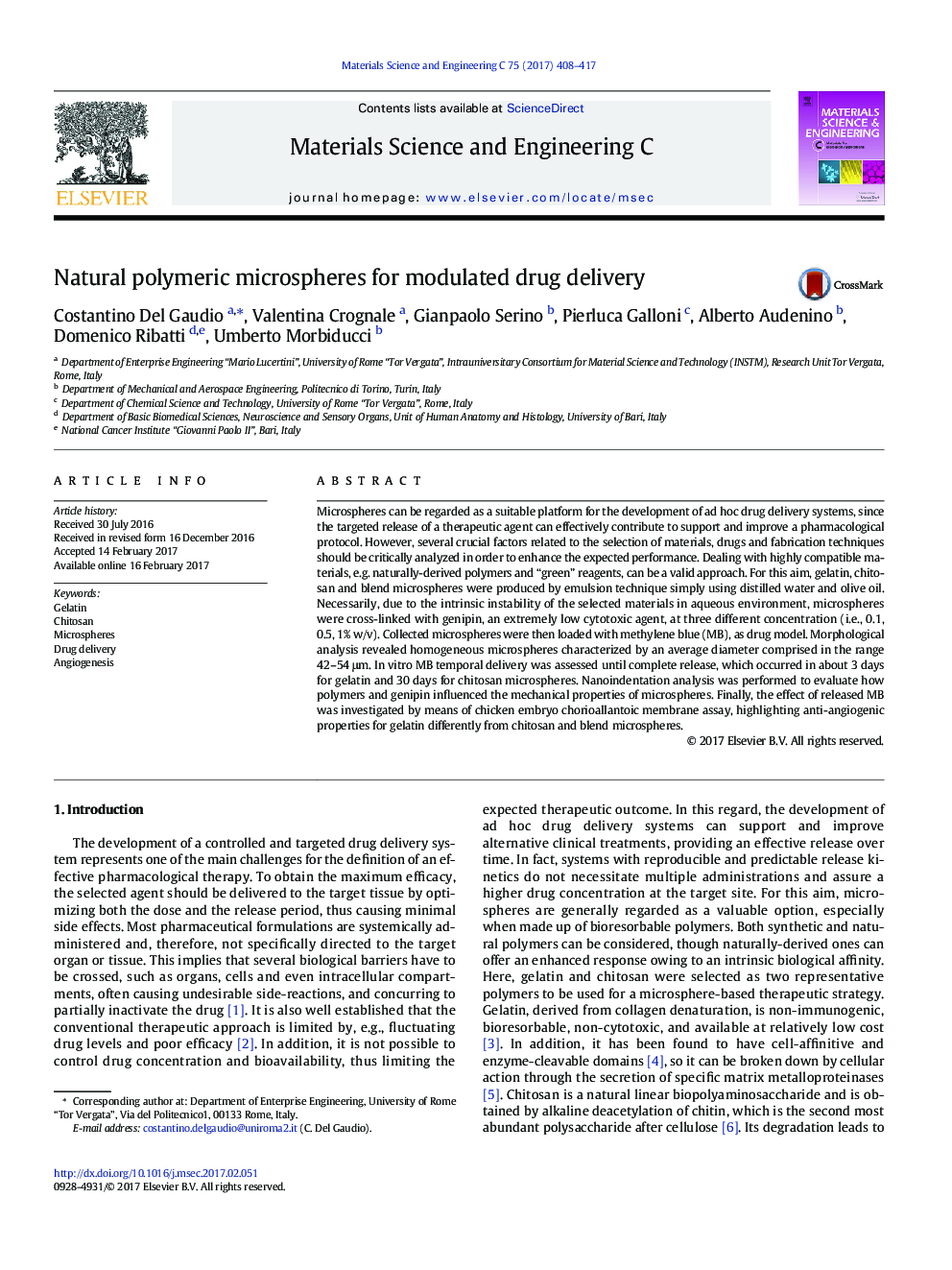| Article ID | Journal | Published Year | Pages | File Type |
|---|---|---|---|---|
| 5434839 | Materials Science and Engineering: C | 2017 | 10 Pages |
â¢Microspheres were produced with naturally-derived polymers (gelatin, chitosan) and cross-linking agent (genipin).â¢Collected microspheres were loaded with methylene blue (MB), as drug model.â¢In vitro MB complete release occurred (about 3 days for gelatin, 30 days for chitosan microspheres).â¢Polymers blending and cross-linking strategies allowed the proper modulation of microspheres mechanical properties.â¢Anti-angiogenic behavior was observed for gelatin microspheres.
Microspheres can be regarded as a suitable platform for the development of ad hoc drug delivery systems, since the targeted release of a therapeutic agent can effectively contribute to support and improve a pharmacological protocol. However, several crucial factors related to the selection of materials, drugs and fabrication techniques should be critically analyzed in order to enhance the expected performance. Dealing with highly compatible materials, e.g. naturally-derived polymers and “green” reagents, can be a valid approach. For this aim, gelatin, chitosan and blend microspheres were produced by emulsion technique simply using distilled water and olive oil. Necessarily, due to the intrinsic instability of the selected materials in aqueous environment, microspheres were cross-linked with genipin, an extremely low cytotoxic agent, at three different concentration (i.e., 0.1, 0.5, 1% w/v). Collected microspheres were then loaded with methylene blue (MB), as drug model. Morphological analysis revealed homogeneous microspheres characterized by an average diameter comprised in the range 42-54 μm. In vitro MB temporal delivery was assessed until complete release, which occurred in about 3 days for gelatin and 30 days for chitosan microspheres. Nanoindentation analysis was performed to evaluate how polymers and genipin influenced the mechanical properties of microspheres. Finally, the effect of released MB was investigated by means of chicken embryo chorioallantoic membrane assay, highlighting anti-angiogenic properties for gelatin differently from chitosan and blend microspheres.
Graphical abstractDownload high-res image (147KB)Download full-size image
